Talking Forecast: The Value of Creating a Quality Pipeline
Forecasting is by far one of the most challenging aspects of revenue generation. From the inside, it’s massive amounts of data taking into account multiple influences on each statistic. From the outside (at times), it looks like something akin to chaos and VooDoo! By definition—and this is everyone’s favorite topic, right?—forecasting involves predicting future events based on past and present data. Accurate forecasting (along with being able to see and respond when you hit turbulence) is a tremendously important aspect of sales leadership, yet there’s no one-size-fits-all approach to going about it.
So where does this leave us? What are some of the most effective approaches to building your own crystal ball? To gather perspectives outside of my own, I connected with some of the best revenue leaders in Boston and nationwide. What follows is the first article in a recurring forecasting series: a unique blend of ideas that will set you up for proper monitoring and delivery.
Are you ready? If there was any time to leverage data to predict the future, that time would be now (at least from where I’m standing). Let’s get started!
Forecasting metaphor: To construct a brick building, you need quality, uniform bricks
I’m assuming you’re generating revenue at this point. Your sales numbers may be growing even faster than expected—heck, you may be hitting your monthly revenue targets quicker than ever!
That’s great stuff. However, it’s far too easy to focus on present growth—when looking ahead, choosing an arrival point (a specific revenue amount by a certain date), and working with others to move in the right direction are equally important.
What’s the best way to make that happen?
Well, think of forecasting this way: To build a brick building, you need many top-quality, uniform bricks. You need to lay them one after the other, and constantly pay attention to what you’re doing while also thinking ahead to your end goal. This is what makes a quality pipeline so critical. Without one, working toward your forecasting goals will at best become a life-sucking exercise in frustration, and at worst, it’ll become an invitation to sprint to the closest exit.
Here’s some much-needed perspective: A pipeline is made up of individual deals, right? This means you must first ensure these deals have a degree of predictability—and for the best outcome, you should do this as early as possible.
How so? Your team must execute an effective, detailed, and measurable sales process yielding insights that help to identify deal risks (enabling leaders to identify and take immediate action against deals at risk before they are pushed down the pipe).
It’s crucial to note that when a deal meets early qualifying criteria, the salesperson must maintain momentum ensuring continued progress to further stages in the sales cycle. There must always be a documented next step (preferably a series of steps established in conjunction with the prospect) that includes a calendared date.
Translation? Sales team members need to be equipped to effectively manage deal momentum and collaborate with the prospects on key elements including a target close date. This results in a quality pipeline a sales leader can count on – it becomes less of an estimate and more a collection of small promises (a certain amount of revenue will be closed at a certain date in the future – a promise delivered) to meet your forecasting goals.

I’ve said it once, and I’ll say it again: You wouldn’t construct a building with brittle and misshapen bricks, right? (I sure hope not.) No, you would use high-quality, uniform bricks to keep the walls of your structure strong and sturdy—putting in the work upfront so they can stand the test of time.
Well, the same thing applies to creating the pipeline that will allow you to deliver your forecast. You have to build your pipeline with quality sales cycles and deals first, working hard to meet your sales forecasting requirements at every stage. It’s sounds obvious but few teams actually follow a sales process yielding the true insights required.
This brings us to the next section of this article. We’re going to sit down and discuss the value of consistency and alignment in building our sales forecasting process.
Are your organization and sales leaders in forecasting alignment?
To gain some insight on the topic of forecasting, I sat down with Todd Abbott, CEO of revenue intelligence provider InsightSquared, to talk critical aspects of creating and meeting a forecast.
Todd went above and beyond giving me invaluable information. He immediately shared with me how much of a difference consistency can make. “There needs to be an intellectual alignment between the CEO, the CFO, and the CRO,” he explained.
No one wants to get burned, right? And good CEOs drive cross-functional alignment—enabling the sales team to improve.
What, exactly, does this mean? You might consider the CEO a conduit between departments. Finance needs to work with sales and marketing to do their job. But the opposite is also true. And again, we all need to have the same data and insights to draw a well-informed conclusion. This is what will help us access those deeper analytics.
In this same vein, as the sales leader, the CRO has to complete their own independent analysis and understand the risk profile of the forecasting number. (That is, how much should the sales team lean into the wind? Or, should they be more conservative with the risks they take?) Meanwhile, the CFO—the financial leader—must arrive at an applicable forecasting number too.
From there, it’s time to discuss and compromise. Backed by the CEO, all the parties can present their forecasting knowledge to the Board, and commit in order to ensure alignment. The CRO will ultimately own the number—so keep in mind that if you miss it, you’re almost certainly out.
“The CRO needs a good view of the risks and opportunities in the pipeline and forecast for the team,” Todd emphasized. “Quality of the funnel is important and largely determined by interrogation of each deal—and that’s not right.”
With that, standard deviation against each sales manager is critical. This should result from establishing a historically-based standard deviation for each pipeline manager in the sales structure.
Now, this could be either a sales rep for a smaller organization or a sales manager for a much larger organization—that’s entirely up to you.
But to establish a baseline, you’ll have to use some basic math. This will allow your team to analyze multiple months and quarters simultaneously (if you’ve got the data, of course).
Before we move forward, I’ll be blunt with you: You’ve got to start somewhere. And the best place to start is with readily available data. Please note that the factors in the equation include the number of sales reps (for managers), deal size, close rate, and sales cycle length.
Are you still with me? Great. We’ll go over all of this in more detail in the next section.
Let’s brush up on some basic sales math
Ready to do some math?
First, let me give you context. Say it’s November 2020 (which seems like a lifetime ago), and you, the CEO, and the CFO are working to come up with a forecast number.
Now, you’re considering a B-round raise for later in the year, so it’s imperative that you demonstrate growth in 2021 over what is on track to be a $6M AAR 2020.
Some numbers for your reference: The goal you’ve defined is $10M in ARR bookings over 2021. You have 11 sales reps with an annual quota each of $750,000, and a close rate of 32% for deals reaching a particular point in your sales process (at a $12,000 average ACV).
You math-minded people—I invite you to consult the table below for a clearer picture. (Actually, I urge all of you readers to review this basic sales math!)
| Basic Sales Math | |
| ARR Goal | $10,000,000 |
| Number of Sales Reps | 11 |
| Annual ARR Booking Quota per Sales Rep | $750,000 |
| Team Wide Close Rate | 32% |
| Average Sales Cycle (in days) | 35 |
| Average Deal Size (in ACV) | $12,000 |
| ARR Target per Sales Rep | $909,091 |
| Monthly ARR Booking Quota | $62,500 |
| Closed Deals Required to Achieve Monthly ARR Quota |
5 |
Got it? Good. This data reveals some important insights for achieving your 2021 revenue goal—plus a potential early-warning statistic that will identify a bump in the road (with plenty of time to address it in the current quarter). More details around this scenario will appear in future articles, but let’s start with some basics for now.
These insights also reveal that to achieve the monthly ARR quota ($62,500), each sales rep must close at least 5 deals ($12,000 each). With a close rate of 32%, this means that each individual must have generated at least 16 new deals in the month prior (due to the 35-day sales cycle) in order to have a statistical chance of hitting their monthly goal.
A word of warning: As a sales leader, you’ll want to keep an eye on the funnel results (activity measures will come later). That way, if you have a team member falling behind their objective, you’ll know there’s an issue you need to address (while you still have time to do something about it).
There is another problem, however. Did you spot it? With an annual ARR goal of $10M and 11 sales reps with a $750,000 ARR bookings quota, each rep’s quota is short by $159,091 (or the difference between $909,091 and $750,000). Looks like someone has some hiring to do – and quick!
To prevent revenue delivery shortfalls due to performance issues, you should be mindful of your funnel quality.
“What you need is a quality pipeline,” Todd explained. “As the revenue leader, you need to finetune the system so that when you have a bump, you can let the CFO and CEO know. And you want to have the discussion at the beginning of the quarter—have it later, and you will get burned.”
Again, this brings us to the power of a comprehensive forecast review. This process is designed to see how well regional managers know their business. (It’s also a great way to identify overly-optimistic sandbaggers and people who have no clue what’s going on!)
So, forecasting: Let’s make a habit of it, at a weekly or even a monthly cadence. Because, let’s face it: Teams need a disciplined forecasting process, right down to the manager or sales rep.
Now, this could be addressed in several ways. Baker Communications released an insightful ebook on the topic entitled Pathways to Growth. Reading can yield awesome results, but where sales forecasting is concerned, it’s important not to overlook the power of an expert team.
Happy forecasting, everyone—and stay tuned for the next article in our series. Where this piece explained the power of a quality pipeline, the next one will outline other expert strategies sales teams can take to keep their numbers on target.
I know I’ve left you on the edge of your seat here (kidding?), but please don’t hesitate to contact me with questions or for more information in the interim. I look forward to hearing from you.









